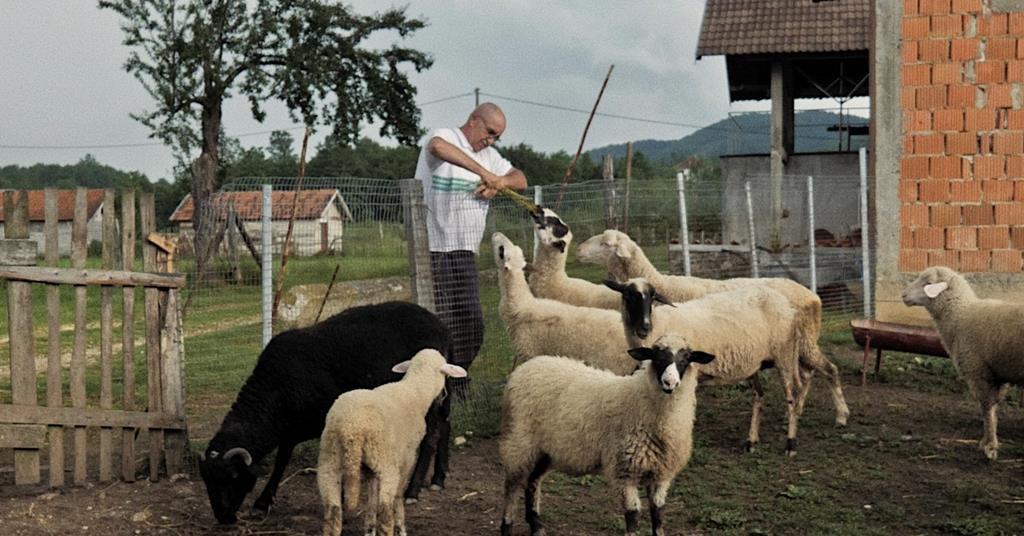Dir. Ado Hasanovic. Italy/France. 2024. 93mins
The Hasanovic household is from Glogova, a village in Bosnia and Herzegovina which was burned down by Serbian forces in Could 1992. In My Father’s Diaries, Bosnian documentarist Ado Hasanovic items collectively the Balkan battle as recorded in movies made by his father Bekir on the time. The result’s a compelling, extremely private investigation wherein the director nonetheless takes a again seat to his father’s story and pictures. Three subsequent many years of turmoil worldwide would possibly imply that this explicit part of European historical past has been forgotten by many, however that’s all of the extra motive why Hasanovic’s modest however pressing testomony deserves consideration.
A tangible visible interpretation of the concepts of reminiscence that can not be erased
The Bosnian expertise of the battle was documented on VHS by a trio of younger males who dubbed themselves ‘Boys, Ben and John’ – Bekir Hasanovic (‘John’), Izet Beganovic (‘Ben’) and Nedzad Ahmetovic (‘Boys’) – and the footage comes to supply a considerable a part of My Father’s Diaries. Their materials is usually purely documentary, with the filmmakers typically in entrance of the digicam, but in addition comprises sequences wherein key incidents are reconstructed with the help of Bosnian troopers and different individuals. Beganovic, typically seen within the 90s footage, was killed in the course of the battle; Ahmetovic survived, however refused Ado Hasanovic’s requests to be interviewed.
In voice-over – presumably learn by Ado – we additionally hear Bekir’s diary of occasions as much as 1995, the 12 months of the Serbian bombing and occupation of town of Srebrenica. Cementing collectively these strands is Ado’s personal footage, shot during the last decade as much as Bekir’s dying in 2020, of Bekir and his spouse Fatima at dwelling on their farm.
This up to date footage provides a specific cost to a movie that feels all of the extra intensely private as a result of Ado downplays his personal directorial presence, though he’s typically seen together with his mother and father. As with all work wherein a filmmaker contemplates their mother and father in youth and in later years, the adjustments introduced by age are unavoidably poignant – however that’s very true when one has to issue within the trauma suffered by a era, and the impact on people who survived when so many didn’t. (The extent of the Bosnian dying toll is obvious in photographs of Fatima brushing snow off the huge roster of names on the Srebrenica Genocide Memorial.)
A part of the movie’s energy comes from the discrepancy between pictures of the younger Bekir – bullish in entrance of the digicam, however open about his despair and vulnerability in his diary – and the gruff, reserved patriarch who appears reluctant to reminisce. However Ado captures some fascinating household dynamics between Fatima, who coaxes her husband into collaborating with their son, and Bekir, who, whereas he grumbles at Ado for filming him, nonetheless appears to need him to inform the household’s story.
My Father’s Diaries touches on wounds not simply healed, and the movie is clear-headed in not aiming for facile reconciliation and catharsis. A very delicate subject raised however not pursued very far was the truth that, throughout his time in besieged Srebrenica, Bekir was concerned with one other lady whereas Fatima and their kids, together with Ado, have been residing elsewhere.
The movie additionally attracts on totally different sources to convey the horror of the battle, together with archive TV materials and a few grim footage shot by a Serbian paramilitary unit recording the execution of prisoners (with a cameraman heard within the background calmly complaining about his digicam’s battery cost). Bekir’s diaries additionally file his tribulations on a vivid stage; for instance, his account of the hallucinogenic results of a fuel grenade.
Hasanovic doesn’t over-explain the occasions of that interval, and jumps in chronology may be disorienting. And it comes as a revelation to find how shortly occasions have been memorialised as they occurred, with the 90s footage exhibiting grownup musicians and youngster singers performing people songs about incidents that had solely simply taken place. Whereas the footage by ‘Boys, Ben and John’ has undergone digital restoration, the glitching, typically distorted textures of 90s VHS tape – presumably accentuated at factors for inventive impact – brings a tangible visible interpretation of the concepts of reminiscence that can not be erased, and of that acquainted concept ‘the fog of battle’ – the fog, and the misery.
Manufacturing firm: Palomar
Worldwide gross sales: Mediawan Rights, Kilian Kiefel kkiefel@mediawan.com
Producers: Carlo Degli Esposti, Nicola Serra
Screenplay: Armando Maria Trotta, Anna Zagaglia, Ado Hasanovic
Cinematography: Ado Hasanovic
Modifying: Esmeralda Calabria, Elisabetta Abrami, Desideria Rayner
Music: Iosonouncane
